This rainbow science experiment is a fun way to explore density.
Materials:
Rainbow in a Glass
Here is a detailed video explaining how to conduct this experiment:
http://www.youtube.com/watch?v=MGvj7Us-yBo
My bugs helped measure the sugar into the first four glasses by adding a tablespoon of sugar to the first glass, two to the second, three to the third, and four to the fourth glass. Then they added 3 tablespoons of water to each glass, leaving the 5th glass empty.
Next, they put 2-3 drops of food colouring into each of the four glasses (we used purple, blue, yellow and red).
After mixing the solutions well, I asked the boys to look closely at each one and predict which coloured solution was the heaviest, or most dense, and why? I used the spoon to scoop up some of each liquid and let it trickle back into each glass. M observed that the purple liquid flowed the slowest and was therefore probably the heaviest. When I asked him which glass had the most sugar in it, he pointed to the purple glass. To test M’s hypothesis, I slowly poured a bit of the purple solution into the fifth empty glass, then I poured the blue solution over the back of the spoon to create a layer on top of the purple layer, and so on. Once we had poured all of the coloured solutions into the 5th glass, we were left with this:
It was a little difficult to see all of the colours, so we carefully moved our glass to the windowsill in order to investigate it further.
The light from the sun helped us to see each layer more clearly. M discovered that his prediction was correct; the more sugar that was mixed into the water, the more dense/heavy the solution was.
When we had finished conducting the experiment, M drew what he observed in his science journal and I recorded his explanation below.
Click on the links for more science experiments, rainbow activities, and St. Patrick’s Day fun!
Thanks for stopping by!!
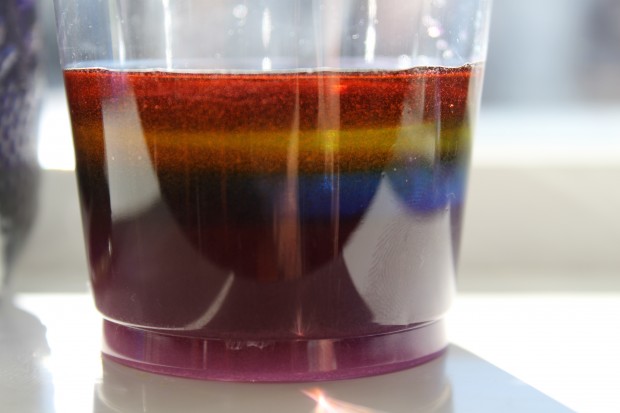
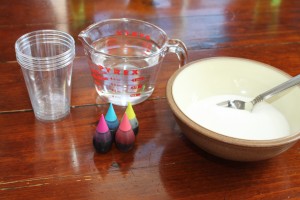
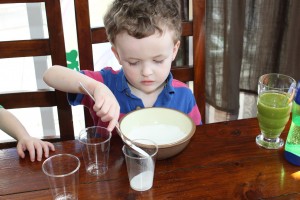
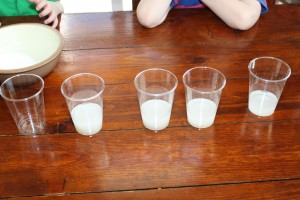
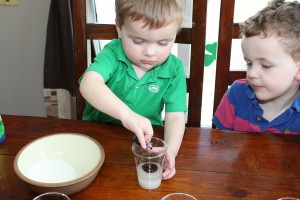
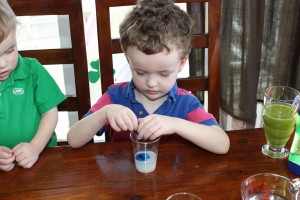
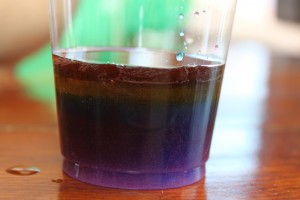
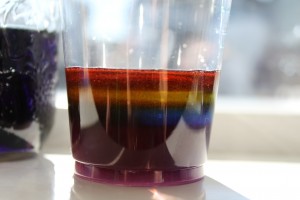
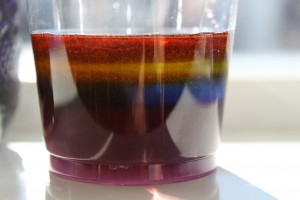
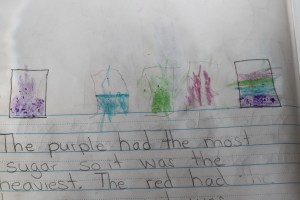
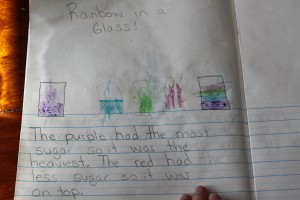
Recent Comments